Donggung Palace and Wolji Pond (경주 동궁과 월지)
5.4 Km 136783 2024-04-08
102 Wonhwa-ro, Gyeongju-si, Gyeongsangbuk-do
+82-54-750-8655
Donggung Palace and Wolji Pond in Gyeongju are secondary palace sites of Silla. The palace, along with other secondary palaces, was used as the eastern palace where the prince lived, and banquets were held during auspicious events or to welcome important guests. It is also where King Gyeongsun of Silla invited King Wang Geon of Goryeo and had a feast to complain about the critical situation in 931 after being invaded by Gyeon Hwon. After unifying the three kingdoms, Silla's King Munmu dug a large pond in the 14th year of his reign (674), creating three islands in the center of the pond along with a 12-peaked mountain to the northeast. Beautiful flowers and trees were planted here, and rare birds and animals were raised. In the Samguksagi (History of the Three Kingdoms) from the Goryeo dynasty, there is only a record of Imhaejeon Hall and no mention of Anapji Pond. After Silla fell and the place fell into ruins during the Goryeo and Joseon dynasties, poets and calligraphers looked at the pond and recited a line of poetry that says, “The once splendid palace is gone, and only geese and ducks fly in.” That's why the place is called Anapji, using the letters 'an' for wild geese and 'ab' for ducks. In the 1980s, pottery fragments with the inscription "Wolji" were excavated, and it was confirmed that this area was originally called "Wolji," which means "a pond that reflects the moon." And the name Anapji was changed to Wolji Pond afterwards.
Gyeongju National Museum (국립경주박물관)
5.4 Km 73605 2023-07-12
186, Iljeong-ro, Gyeongju-si, Gyeongsangbuk-do
+82-54-740-7500
Gyeongju National Museum houses numerous historical and cultural artifacts of the Silla dynasty (57 BC-AD 935). The museum provides various programs including at the Children’s Museum School. The newly renovated Silla Art Gallery and Silla History Gallery lobby by Teoyang Studio are popular among visitors. This multi-complex center provides the history of Silla with various artifacts.
Gyeongju Wolseong Palace Site (Banwolseong Fortress) (경주 월성(반월성))
5.7 Km 25901 2023-01-03
Inwang-dong, Gyeongju-si, Gyeongsangbuk-do
+82-10-3226-6390
This was the location of the palace-fortress during the Silla dynasty (57 BC ~ AD 935). The fortress takes after its name, which, literally translates to mean a crescent moon shape on top of a hill. The famous history books of Samgukyusa mention that Silla’s 4th King Seoktalhae (AD 57~80) thought this area was an ideal spot for the fortress and bought the land from a nobleman. The 2nd King Namhae (AD 4~24) impressed by Seoktalhae’s actions, took him in as his son-in-law, later, becoming the 4th king. The area was then under Silla’s rule for 900 years, the last king being the 56th, Gyeongsoon (AD 927~935).
Although the magnificent grandeur of the palace is now just an empty lot, it has been told that this area was filled with imperial buildings during the Silla dynasty. Currently, the region of Wolseong has a freezer made out of rocks called Seokbinggo, an archery range, a horse-riding field, and a traditional playground, which resembles the grounds of the Joseon Period (the dynasty that ruled the Korean peninsula from 1392-1910).
Cheonggong [Korea Quality] / 청공한옥 [한국관광 품질인증]
5.7 Km 9380 2020-09-08
5-6, Igu 2-gil, Gyeongju-si, Gyeongsangbuk-do
+82-10-4577-5223
Cheonggong Hanok is a mere 10 minutes away from Bulguksa Station (Donghae Line) on foot. The two traditional Hanok buildings house 10 rooms. Once you enter the main gate, the harmonious scene of a big grassy yard, a very old pine tree, a small pond, and the graceful Hanok buildings welcomes you. The garden looks a bit exotic, but there is a back story to it. The first architect of the house did business in Japan with his wife living alone in Gyeongju but regretted not having spent a long time with her; thus, he came back to Korea, built the biggest house possible, and lived with his wife for the rest of his life. Afterward, his descendants took over it, named it after the architect, Cheonggong, and opened it as a Hanok stay. That is how the space where Korea’s traditional Hanok and Japanese garden were put together by the Korean architect who did an extended stint in Japan came to be. The table used by the couple is preserved in the garden for guests to look at. Although it is a traditional Hanok, every room is equipped with a TV, a refrigerator, an air-conditioner, and a bathroom to make the space comfortable to stay even for children.
Kolon Hotel Gyeongju (코오롱호텔)
5.7 Km 16302 2021-04-15
289-17, Bulguk-ro, Gyeongju-si, Gyeongsangbuk-do
+82-54-746-9001
Kolon Hotel Gyeongju is located in front of Bulguksa Temple, one of the world’s top ten historic sites. The building features arch-shaped fortress wall with spacious areas, designed with both traditional and modern elements. As a recuperation hotel, it houses a spa using sodium bicarbonate water, and a 9-hole public golf course. It offers a cozy ambience and sincere service with varied facilities including pleasant guestrooms viewing the sunrise of Tohamsan Mountain, sports facilities for golf, swimming, jogging and spas. It is the only premium-class hotel in Gyeongju to have hot spring spa facilities. The lobby on the third floor is famous for the lounge where people can enjoy the panoramic scenery of Tohamsan Mountain while relaxing, as well as a coffee shop serving various drinks and a luncheon over live music.
Seochulji Pond in Gyeongju (Lotus Flower) (경주 서출지)
5.8 Km 16837 2020-04-04
17, Namsan 1-gil, Gyeongju-si, Gyeongsangbuk-do
+82-54-779-6079
Located at the foot of Namsan Mountain in Gyeongju, Seochulji Pond dates back to the Three Kingdoms Period. There are two, three-storied stone pagodas in the heart of Namsan Village and a small, elegant pond to the east. The pond is famous thanks to a Korean legend, written below:
In the 10th year of King Soji (488) of Silla, a crow and a mouse approached the king as he was on his way to Namsan Mountain. The mouse told the King to “follow after the crow” for an easy journey. So, the King and his servant (who was traveling with him) followed the crow, but became distracted and lost their way. As they were wandering about a pond (now known as Seochulji), an old man appeared from the waters’ depths and presented an envelope to the King. Based on the message in the envelope, the King instructed his servant to fire an arrow at the Geomungo (Korean musical instrument) case nearby. The shot killed the queen and a monk who had been hiding there, both of whom had been hatching a plot against the King.
The name of the pond, “Seochulji” (literally meaning “writing from the pond”) originates from this legend. It is said that a man named Imjeok built a building by the pond in the 5th year of King Hyeonjong (1664) to enjoy the scenery. The simple, yet elegant building still remains at the northwest of the pond.
Seokbinggo (Stone Ice Storage) (경주 석빙고)
5.8 Km 24923 2020-04-06
Inwang-dong, Gyeongju-si, Gyeongsangbuk-do
+82-54-779-6100
Seokbinggo means a freezer made of rocks. It is an ancient refrigerator only in Korea. It is located in Gyeongju, the ancient capital of the Silla Era (BC57-AD935). The appearance of this wonderful vestige is humble and simple. But you will not be disappointed at the entrance of the freezer. You can feel the cold from inside the structure. Half of Seokbinggo is underground while the other half is above ground, signifying the scientific propensity of Korea. The floor, walls, and ceiling are made of granite and have an airway. The walls are covered with limestone to keep off moisture and water. The floor is slanted to allow melted ice to funnel out. Frozen ice was popular for the upper class. From historical annals, it is assumed that Seokbinggo was made at least 1,500 years ago. Seokbbingo has been designated as National Treasure No. 66.
Hanok Stay Joadang [Korea Quality] 한옥스테이 조아당[한국관광 품질인증]
5.8 Km 1 2023-09-12
11, Wonhyo-ro 213beon-gil, Gyeongju-si, Gyeongsangbuk-do
+82-10-6520-5074
oadang is a private hanok stay on Wonhyoro-gil, Gyeongju, Gyeongsangbuk-do. The inside of this traditional hanok is finished with cypresswood, and guests can catch the scent of cypress and feel refreshed. There are two guestrooms, both with a queen-size bed, and one with its own bathroom. The location is great for walking and for seeing the sights of Gyeongju.
Gyeongju Bulguksa Temple [UNESCO World Heritage] (경주 불국사 [유네스코 세계문화유산])
6.1 Km 241163 2023-01-03
385, Bulguk-ro, Gyeongju-si, Gyeongsangbuk-do
+82-54-746-9913
Bulguksa Temple is a representative relic of Buddhist culture from the Silla kingdom. The temple was built during the 15th year of King Beopheung's reign (514-540) to wish for peace and prosperity for all. It was later rebuilt in 751 by Kim Dae-seong. Unfortunately, the temple caught fire during the Imjin War (1592-1598). After the war, the temple suffered serious damage and was often the target of theft.
Starting in 1920, the temple has undergone continual restoration work. The temple now holds seven national treasures and a number of additional important heritages and was designated a World Cultural Heritage Site along with the nearby Seokguram Grotto by UNESCO in December 1995.
Gyeongju Gyerim Forest (경주 계림)
6.2 Km 24780 2020-07-06
Gyo-dong, Gyeongju-si, Gyeongsangbuk-do
+82-54-779-8743
Gyerim Forest is located between the Cheomseongdae Observatory and Wolseong Fortress. The forest is thickly populated by ancient zelkova and willow trees rooted on gently sloping hills and along the small stream in the northwest part of the woods. According to legend, the forest is closely associated with myths surrounding the birth of Alji, the founder of the Gyeongju Kim clan. As such, it is designated national Historic Site No. 19.
Legend has it that King Talhae heard a rooster crying from deep inside the Sirim Woods. Chancellor Hogong was sent to investigate. Upon arriving, he found a rooster crying underneath a tree on which hung a golden box. Hogong immediately reported his find to the king, who instructed him to bring the golden box into the palace. The king opened the box and found a small child inside, Kim Alji. The forest, which had previously been called ‘Sirim’ or ‘Gurim’, became known as ‘Gyerim’, ('gye’ meaning rooster). The name Gyerim was also used to refer to the Silla kingdom.
Alji was adopted as the king’s son, but because the crown was passed on to King Pasa of the Park family, he never ascended the throne. The Kim clan later became the royal bloodline with the coronation of King Naemul some years later.
The memorial stone recording the birth of Kim Alji was erected in the third year of King Sunjo's rule in the Joseon dynasty. Located close to the royal fortress of Silla, the forest is still deeply revered as the mystical birthplace of the first ancestor of the royal Kim clan of Silla. Yellow canola blossoms along the path connecting Daereungwon with Gyerim and Banwolseong only add to the magical ambiance of the forest.

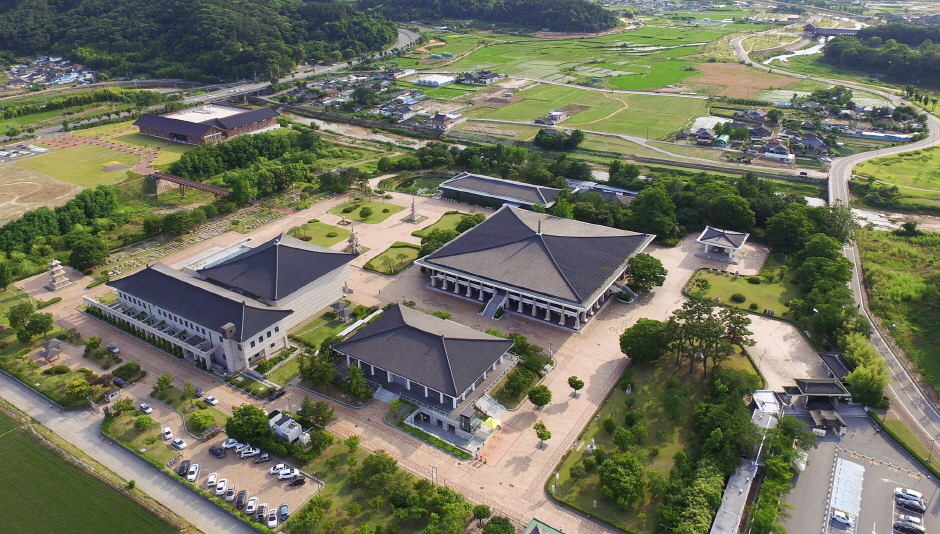
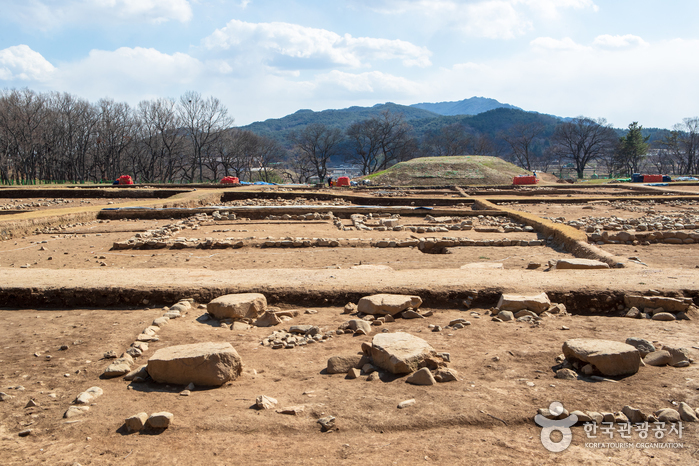
![Cheonggong [Korea Quality] / 청공한옥 [한국관광 품질인증]](http://tong.visitkorea.or.kr/cms/resource/69/2637169_image2_1.jpg)
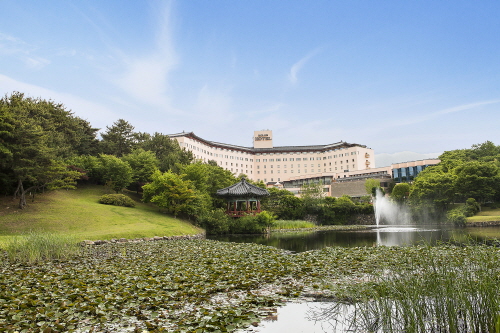
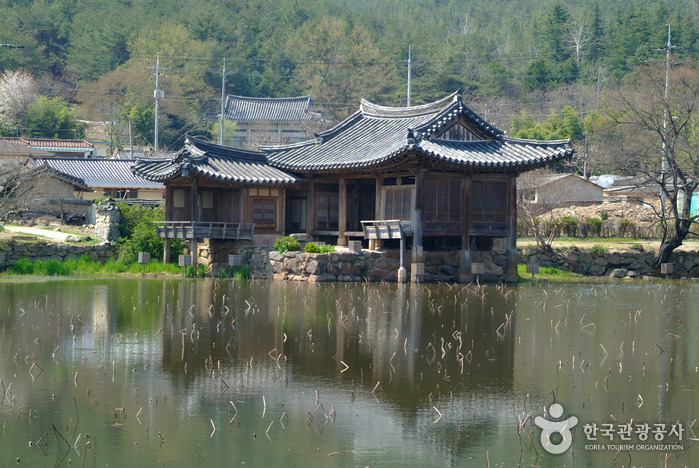
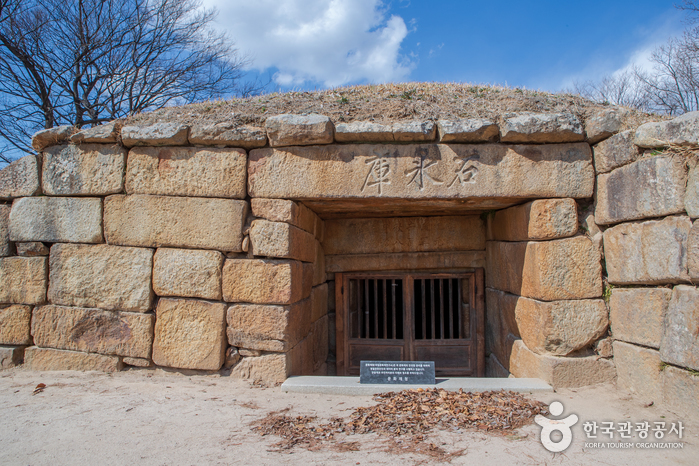
![Hanok Stay Joadang [Korea Quality] 한옥스테이 조아당[한국관광 품질인증]](http://tong.visitkorea.or.kr/cms/resource/08/3009408_image2_1.jpg)

 English
English
 한국어
한국어 日本語
日本語 中文(简体)
中文(简体) Deutsch
Deutsch Français
Français Español
Español Русский
Русский